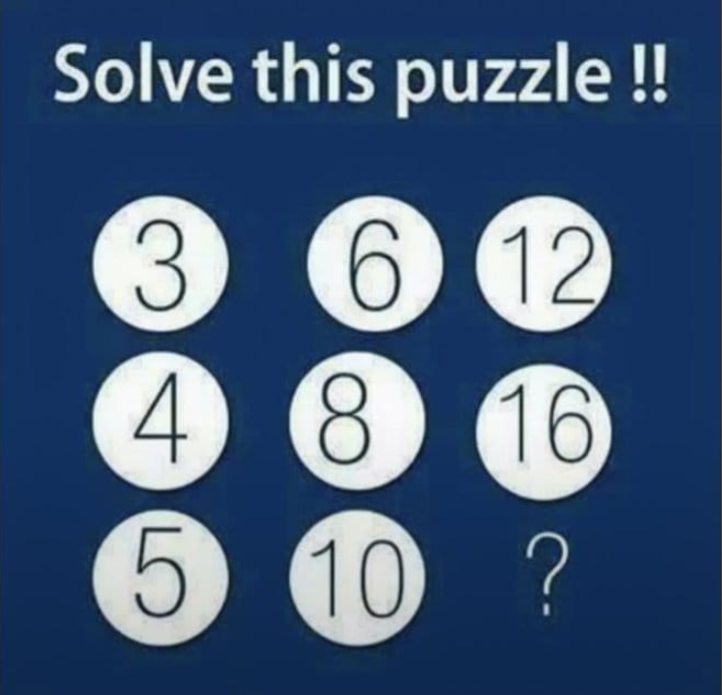Here’s a fun and deceptively simple puzzle making waves across social media. You’re presented with a grid of numbers and asked one straightforward question: What’s the missing number in the bottom-right corner?
At a glance, it looks easy. But like many great puzzles, the answer isn’t obvious unless you pay close attention to the patterns. Some people get it instantly, while others stare at it for minutes—maybe even longer—without spotting the logic.
So… can you solve it?
Which number should replace the question mark?

Common Mistakes and Misleading Assumptions
Before we walk through the solution step-by-step, let’s talk about where most people go wrong.
The most common errors occur when people:
- Focus only on rows or columns, but not both
- Overcomplicate the puzzle with advanced math
- Look for sequences or sums that don’t align
- Miss simple multiplication patterns right in front of them
It’s totally normal. Puzzles are designed to make you overthink, and that’s where logic battles intuition.
Let’s slow down, strip the puzzle to basics, and build our way up to the right answer.
Step-by-Step Puzzle Breakdown
To solve this, let’s start by carefully examining both rows and columns to see if a pattern emerges.
First Row:
3 6 12
Now think about how these numbers might relate.
3 → 6 → 12
What happens here?
- 3 × 2 = 6
- 6 × 2 = 12
Or, looking in steps:
- 3 × 2 = 6
- 3 × 4 = 12
Interesting! Let’s hold onto that thought.
Now move to the second row.
Video : Riddles for Genius: Only the Smartest Can Answer!
Second Row:
4 8 16
Again, look at the relationship:
- 4 × 2 = 8
- 8 × 2 = 16
or - 4 × 2 = 8
- 4 × 4 = 16
Aha! Same pattern as the first row. The first number is multiplied by 2 for the second column and by 4 for the third column.
Let’s put that into a general pattern:
If X is the first number in a row:
- Second column = X × 2
- Third column = X × 4
Let’s apply this to the final row.
Third Row:
5 10 ?
Following our pattern
- 5 × 2 = 10 ✅
- 5 × 4 = 20 ✅
So, the missing number is 20.
Correct Answer: 20
Why This Puzzle Is So Effective
This puzzle seems easy, but it trips people up because it hides behind basic arithmetic. The numbers are simple, and that simplicity makes us assume the pattern is more complicated than it really is.
Video : 4 8 16|| 3 6 12|| 2 4 8|| 5 10 20|| 3 9 ?
We tend to:
- Expect something tricky
- Overlook easy multiplication
- Miss consistent patterns across multiple rows
It’s also a great reminder that logic doesn’t always require complex calculations—sometimes, it’s just a matter of consistency.
Conclusion: Train Your Brain, One Puzzle at a Time
The beauty of logic puzzles lies in their ability to make you rethink how you look at information. Today, it’s a simple number pattern. Tomorrow, it might be a riddle, a visual illusion, or a critical thinking scenario.
The more you practice, the sharper your mind becomes. And who knows? That brainpower might just help you solve problems far beyond the puzzle world.
So, remember: next time you see a simple grid of numbers, don’t underestimate it. Sometimes, the smartest answers are the simplest ones hiding in plain sight.


